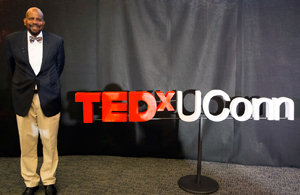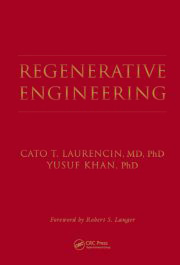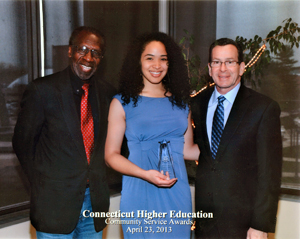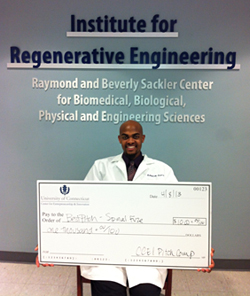
On September 21st, I was excited to stand on the TEDx stage in the University of Connecticut and give a talk on “Regenerative Engineering.” My talk highlighted the tremendous work being carried out here at the Institute for Regenerative Engineering. More specifically, I discussed our latest invention — a bioengineered matrix for the regeneration of torn anterior cruciate ligaments of the knee.
TED stands for Technology, Entertainment, Design and is a global set of conferences under the slogan “ideas worth spreading”. TEDx is a program of local, self-organized events that bring people together to share a TED-like experience. I was happy to be included in UConn’s first TEDx conference.
My talk will be added to TEDxUConn site by the end of October, please visit www.tedxuconn.com.
 The Institute for Regenerative Engineering has launched a textbook entitled Regenerative Engineering. It explores the development and examination of vital organs and tissue types, addressing concerns as they relate to the regenerative engineering of various organ tissues, vascular tissues, bone, ligament, neural tissue, and the interfaces between tissues. I would like to thank all of the authors for their outstanding contributions. I also thank my mentor, Dr. Robert S. Langer of MIT who contributed the foreword. In addition, I value Dr. Yusuf Khan’s time and effort in putting together this textbook.
The Institute for Regenerative Engineering has launched a textbook entitled Regenerative Engineering. It explores the development and examination of vital organs and tissue types, addressing concerns as they relate to the regenerative engineering of various organ tissues, vascular tissues, bone, ligament, neural tissue, and the interfaces between tissues. I would like to thank all of the authors for their outstanding contributions. I also thank my mentor, Dr. Robert S. Langer of MIT who contributed the foreword. In addition, I value Dr. Yusuf Khan’s time and effort in putting together this textbook. It gives me great pleasure to announce that Keshia Ashe, a chemical engineering student in the Institute for Regenerative Engineering, was recently awarded the 2013 Individual Student Service Award given by the Connecticut Higher Education Community. Colleges and universities around Connecticut annually recognize individuals and groups who design projects which serve a community, incorporating originality and unique approaches, substantially raising student participation, and addressing community problems.
It gives me great pleasure to announce that Keshia Ashe, a chemical engineering student in the Institute for Regenerative Engineering, was recently awarded the 2013 Individual Student Service Award given by the Connecticut Higher Education Community. Colleges and universities around Connecticut annually recognize individuals and groups who design projects which serve a community, incorporating originality and unique approaches, substantially raising student participation, and addressing community problems. On April 11, I was so humbled by receiving the Technology Innovation and Development Award from the Society for Biomaterials (SFB). The award ceremony was held at the SFB annual meeting in Boston, MA. This award recognizes an individual or team who provided key scientific and technical innovation and leadership in a novel product in which biomaterials played an important and enabling role.
On April 11, I was so humbled by receiving the Technology Innovation and Development Award from the Society for Biomaterials (SFB). The award ceremony was held at the SFB annual meeting in Boston, MA. This award recognizes an individual or team who provided key scientific and technical innovation and leadership in a novel product in which biomaterials played an important and enabling role. The Connecticut Center for Entrepreneurship and Innovation (CCEI) held its Start-Up Challenge Pitch Competition on April 8 on the Storrs campus. Open to students on all UConn campuses, CCEI awarded a total of $10,000 in prize money to individuals and/or teams across ten categories. Entries ranged from mobile apps for improved access to educational resources to novel material design for improved transportation infrastructure. The organizers challenged students to prepare a 90-second business idea pitch followed by a 2-minute Q&A session.
The Connecticut Center for Entrepreneurship and Innovation (CCEI) held its Start-Up Challenge Pitch Competition on April 8 on the Storrs campus. Open to students on all UConn campuses, CCEI awarded a total of $10,000 in prize money to individuals and/or teams across ten categories. Entries ranged from mobile apps for improved access to educational resources to novel material design for improved transportation infrastructure. The organizers challenged students to prepare a 90-second business idea pitch followed by a 2-minute Q&A session.